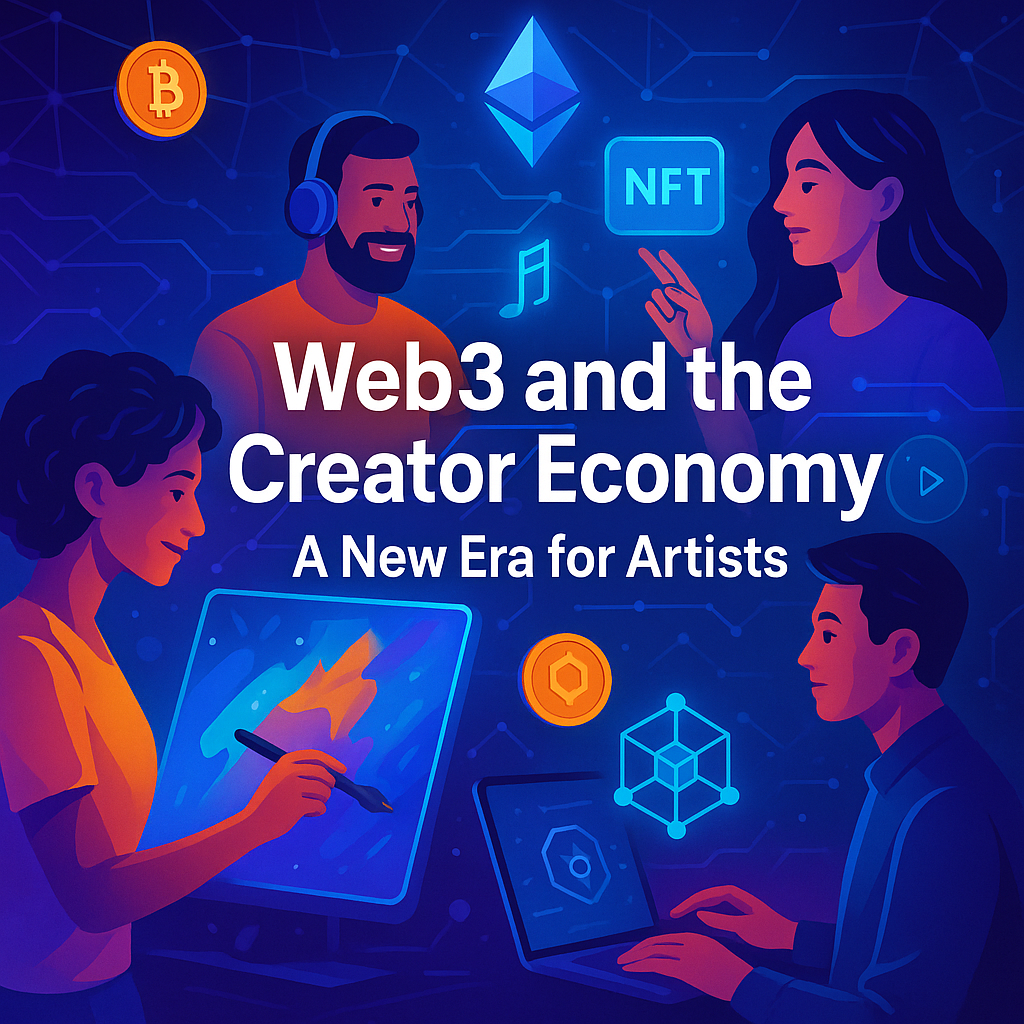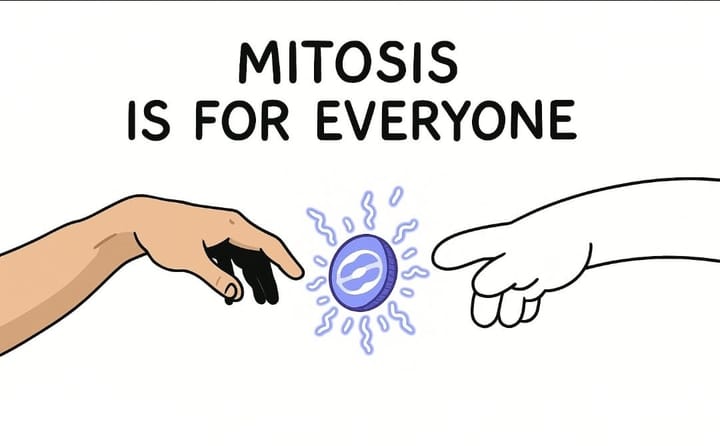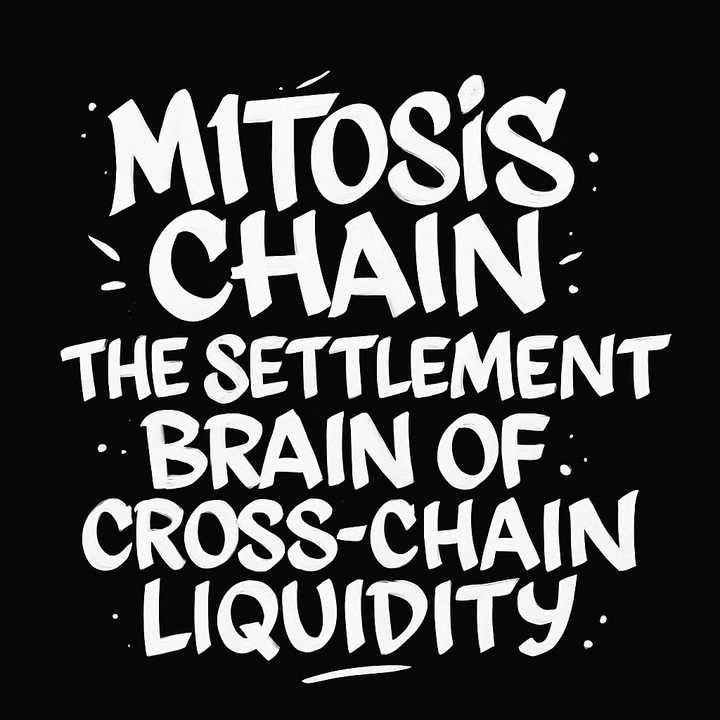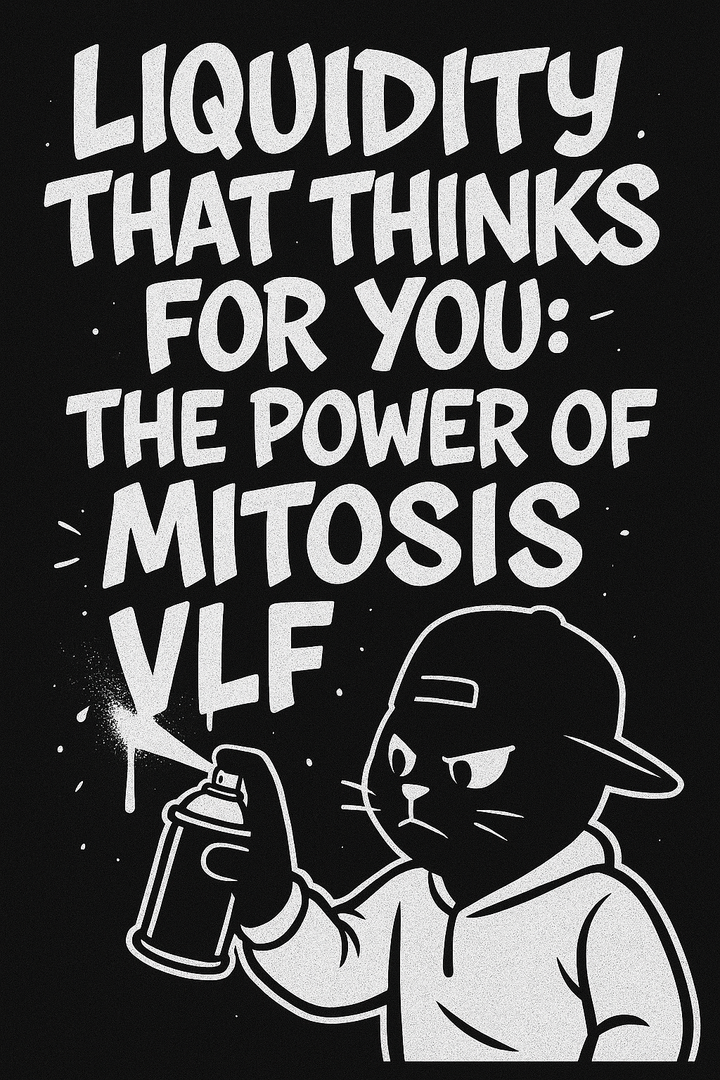Web3 and the Creator Economy: A New Era for Artists

We’re living through a creative revolution. As Web3 gains momentum and the creator economy booms, the way we make, share, and earn from content is rapidly changing. This article takes a closer look at how Web3—fueled by decentralization, blockchain tech, and true digital ownership—is opening new doors for artists, creators, and communities. From NFTs to new monetization models, we’ll explore the tools and trends shaping this shift—and what it all means for the future of creative work online.
Introduction: The Confluence of Web3 and Creativity
Defining Web3 and the Creator Economy
Web3 represents the internet’s next chapter, moving beyond the “read-write” Web2 model to a “read-write-own” paradigm. Built on blockchain technology, Web3 emphasizes decentralization, transparency, and user control over data and digital assets (Web3 Canada). Unlike Web2, where tech giants dominate, Web3 aims to dismantle monopolistic control, fostering a more equitable digital space (ResearchGate).
The creator economy, valued at over $100 billion globally and potentially reaching $300 billion, includes artists, musicians, writers, gamers, and influencers who produce content and monetize directly with audiences. With over 50 million creators worldwide, this sector is reshaping digital entrepreneurship (TradeFlock Asia).
The intersection of Web3 and the creator economy is a game-changer. Web3 technologies empower creators to own, distribute, and monetize their work with unprecedented autonomy, challenging Web2’s platform-controlled model. This shift redefines power dynamics, positioning creators as key economic players.
Purpose of This Article
This article examines Web3’s impact on the creator economy, exploring how its tools enhance creator autonomy, disrupt traditional intermediaries, and introduce ethical challenges. We’ll compare Web2 and Web3, analyze case studies, and look to future trends, offering a comprehensive guide to this evolving landscape.
The Web3 Toolkit: Reshaping Creative Landscapes
Web3’s transformative power lies in its suite of technologies—blockchain, NFTs, smart contracts, DAOs, and decentralized platforms—that redefine how creators work and connect.
Blockchain: The Foundation of Trust
Blockchain, a decentralized digital ledger, ensures secure, transparent, and tamper-proof records of ownership and transactions (CodeZeros). For creators, this means verifiable authenticity for digital art, music, or other works, fostering trust in a replicable digital world.
Non-Fungible Tokens (NFTs): Redefining Ownership
NFTs are unique digital certificates on a blockchain, representing ownership of assets like art or music (TradeFlock Asia). They offer creators:
- Verifiable Ownership: Proof of authenticity to combat copying
- Direct Sales: Selling directly to global audiences, bypassing galleries
- Programmable Royalties: Automatic earnings from secondary sales.
- Community Access: NFTs as keys to exclusive content or communities .
Popular platforms like OpenSea and Rarible facilitate NFT creation and sales.
Core Web3 Technologies and Their Utility for Creators
| Technology | Concise Description | Primary Benefit/Use Case for Creators | Key Example(s) |
|---|---|---|---|
| Blockchain | A decentralized, immutable, and transparent digital ledger. | Securely records ownership, tracks provenance of creative works, facilitates transparent transactions. | Tracking NFT ownership history; Verifying authenticity of digital art. |
| Non-Fungible Tokens (NFTs) | Unique digital certificates of ownership for assets, stored on a blockchain. | Enables verifiable ownership of digital/physical items, direct sales to fans, programmable royalties, community building. | Selling digital art as NFTs; Offering token-gated access to exclusive content; Earning royalties from secondary sales. |
| Smart Contracts | Self-executing contracts with the terms of the agreement directly written into code, running on a blockchain. | Automates royalty payments, licensing agreements, and other transactional logic without intermediaries; enhances transparency. | Automatic distribution of music streaming royalties to multiple collaborators; Automated enforcement of IP licensing terms. |
| Decentralized Autonomous Organizations (DAOs) | Community-led entities governed by smart contracts and token holders, often managing a shared treasury. | Enables collective ownership, community governance over creative projects/funds, decentralized funding, and shared risk/reward. | A musician's fan community (DAO) voting on the next album concept or funding a tour; A collective of artists managing a shared NFT portfolio. |
| Decentralized Platforms (dApps) | Applications built on decentralized infrastructure (e.g., blockchain), offering alternatives to centralized Web2 services. | Provides creators with platforms for direct monetization, content distribution, and community engagement with potentially lower fees and more control. | Decentralized social media platforms (e.g., Farcaster, Lens Protocol); Music streaming services like Audius; Freelance marketplaces like Braintrust. |
Smart Contracts: Automating Agreements
Smart contracts are self-executing code on blockchains, automating agreements like royalty payments or licensing (CodeZeros). They reduce administrative costs and enhance transparency, allowing creators to focus on their craft.
Decentralized Autonomous Organizations (DAOs): Community Power
DAOs are community-run entities governed by smart contracts, where token holders vote on decisions like project funding. Benefits include:
- Accessibility: Lower entry barriers for fans to participate.
- Collective Ownership: Tokens represent stakes in a creator’s work.
- Community Governance: Fans influence creative directions.
Decentralized Platforms: New Creative Venues
Decentralized applications (dApps) like Audius (music streaming) and Braintrust (freelancing) offer alternatives to Web2 platforms, with lower fees and greater control (Solana Compass). These platforms enable direct monetization and community engagement.
Empowering the Modern Creator: New Frontiers
Web3 empowers creators with enhanced control, direct monetization, and deeper community ties.
Enhanced Control and True Ownership
Web3 shifts control from platforms to creators:
- Decentralized Ownership: Creators set terms for their work via blockchain.
- NFT Provenance: Verifiable ownership combats piracy.
- Data Sovereignty: Creators own audience data, ensuring direct relationships.
This ownership can make digital works inheritable assets with ongoing royalties.
Direct-to-Fan Monetization
Web3 enables creators to earn more through:
- Disintermediation: Lower platform fees increase revenue.
- NFT Sales: Upfront earnings from direct sales.
- Secondary Royalties: Automated payments from resales.
- Token-Gated Content: Exclusive access for token holders.
- Social Tokens: Creator coins for fan support and investment.
- Crowdfunding: NFT-based funding for projects.
Building Engaged Communities
Web3 transforms fans into stakeholders:
- Token-Based Communities: NFTs and tokens grant access to exclusive perks.
- DAO Governance: Fans vote on creative decisions.
- Unified Presence: Platforms like OneHub centralize NFT collections and fan interactions.
However, creators must now manage communities and tokenomics, risking burnout.
The Collaboration Economy
Web3 fosters a “collaboration economy” where fans co-create and co-own projects via tokens and NFTs (e27). This blurs creator-consumer lines but raises challenges in IP attribution and compensation.
Challenging the Gatekeepers: Web3 vs. Traditional Intermediaries
Traditional Intermediaries
Gatekeepers like YouTube, Spotify, and galleries curate content, manage careers, and handle monetization, often taking significant revenue shares (CodeZeros).
Web3’s Disruption
Web3 bypasses intermediaries through:
- Direct Connections: Creators engage fans without middlemen (Forbes).
- Decentralized Platforms: Alternatives to Web2 services.
- Smart Contracts: Automate royalty and licensing tasks.
- NFT Sales: Direct art sales with provenance.
However, new intermediaries like NFT marketplaces may emerge as gatekeepers .
Case Studies
- Music: Audius offers artists higher streaming revenue and NFT integration, while SoundMoney Protocol connects artists and fans directly.
- Visual Arts: Beeple’s $69.3M NFT sale and platforms like Decentraland democratize art access.
- Gaming: Axie Infinity’s play-to-earn model and The Sandbox’s player-owned economies empower gamers.
- Publishing: Mirror.xyz enables writers to sell articles as NFTs, bypassing publishers.
Web2 vs. Web3: A Paradigm Shift
Web2 vs. Web3 Paradigms in the Creator Economy
| Feature | Web2 Approach | Web3 Approach |
|---|---|---|
| Control | Centralized; dominated by a few tech giants and platforms. | Decentralized; power distributed across users and networks via blockchain. |
| Data Ownership | Platform-owned; user data collected, controlled, and monetized by platforms. | User-owned; individuals control their data and digital assets (data sovereignty). |
| Monetization/Revenue Sharing | Primarily advertising-centric, app store fees, data monetization; platforms take significant revenue cuts. | Token-based economies; direct creator earnings via NFTs, social tokens, DeFi integrations, fan support; potentially lower platform fees. |
| Privacy | Limited; widespread data tracking, behavioral profiling by platforms. | Enhanced (aimed); encryption, user-controlled access, though public blockchains have transparency trade-offs. |
| Censorship Resistance | Prone to censorship; platforms control content moderation and can ban users/remove content. | More censorship-resistant due to decentralized structure; no single point of control for content removal. |
| User Experience (UX) | Generally user-friendly, intuitive interfaces, established navigation patterns. | Can have a steeper learning curve; may require technical knowledge (wallets, gas fees); interoperability challenges. |
| Key Intermediaries | Social media platforms, streaming services, app stores, publishers, record labels, galleries. | Potentially NFT marketplaces, DAO platforms, smart contract developers (new forms of intermediation). |
| Artist Autonomy | Limited by platform policies, algorithmic control, and revenue sharing models. | Enhanced through direct ownership, direct monetization channels, and community governance. |
Ethical Challenges in the Web3 Creator Economy and Potential Mitigation Strategies
| Ethical Issue | Description of Risk to Creators/Users | Potential Mitigation Approaches/Solutions |
|---|---|---|
| Market Volatility & Speculation | Unstable income for creators, risk of significant financial loss for investors/collectors, prioritization of financial gain over artistic value. | Creator education on financial risks, diversification of income streams, development of more stable tokenomic models, transparent communication about project fundamentals. |
| Security Risks & Fraud | Theft of digital assets through phishing, scams (e.g., rug pulls), exploitation of smart contract vulnerabilities, loss of funds due to user error (e.g., lost keys). | Rigorous smart contract audits, user education on security best practices (key management, scam identification), use of reputable platforms, development of user-friendly recovery mechanisms (where possible). |
| IP Protection Gaps | Unauthorized minting of copyrighted work as NFTs, ambiguity in copyright ownership with NFT sales, difficulty enforcing IP rights in decentralized environments. | On-chain IP registries (e.g., Story Protocol), clear licensing terms embedded in smart contracts, legal reforms adapted to digital assets, community-based IP monitoring and dispute resolution. |
| Environmental Impact | High energy consumption of PoW blockchains contributing to carbon emissions, negative perception impacting adoption. | Transition to PoS and other energy-efficient consensus mechanisms, use of renewable energy for mining/validation, carbon offsetting initiatives, development of Layer-2 scaling solutions. |
| Accessibility & Digital Divide | Technical complexity and knowledge gap act as barriers, economic costs (crypto, gas fees, devices) limit participation, potential to worsen existing inequalities. | User-friendly interface design, educational programs on Web3 literacy, development of low-cost infrastructure and access points, inclusive tokenomics and governance models. |
| New Gatekeepers & Centralization | Dominant NFT marketplaces influencing visibility, plutocracy in DAO governance due to token-weighted voting, platform/protocol lock-in, centralization for usability. | Promoting diverse marketplaces, DAO governance reforms (e.g., quadratic voting, reputation-based systems), fostering interoperability standards, community vigilance against power consolidation. |
Future Trajectories for Web3 and Creators
Technological Advancements
- Decentralized AI (DeAI): Platforms like Sahara AI offer creators AI tools for content creation, raising IP and authenticity questions (Aethir).
- NFT Utility: Evolving NFTs will offer access, fractional ownership, and dynamic features.
- User Experience: Simplified platforms will drive adoption.
- Scalability: Layer-2 solutions will reduce costs.
Regulatory Landscape
Clear regulations will balance innovation and protection, with global coordination addressing cross-border issues.
Shifts in Behavior
Fans will become collaborators, expecting ownership and participation. Direct support models and mainstream creator adoption will grow.
A Creator-Centric Future
Web3 could empower niche creators and ensure fairer revenue, but addressing accessibility and volatility is crucial.
Conclusion: A Transformative Path Forward
Web3 is redefining the creator economy, offering tools for ownership, direct monetization, and community engagement. Yet, challenges like volatility, security, IP protection, environmental concerns, and accessibility must be addressed.
Success depends on user-friendly tools, robust security, clear regulations, and sustainable practices. The future may blend Web3 and Web2, with creators demanding fairer terms from traditional platforms. This evolution promises a more equitable digital world, where creators thrive and fans are stakeholders.
References
- Web3 Canada: “How Does Web3 Help Creators?”, web3canada.ca https://web3canada.ca/12daysofweb3/how-does-web3-help-creators/
- Forbes: “Web3 And The Future Of Media: Empowering Creators In A Decentralized Ecosystem,” Forbes, https://www.forbes.com/councils/forbestechcouncil/2024/09/04/web3-and-the-future-of-media-empowering-creators-in-a-decentralized-ecosystem/
- RiseIn: “Web2 vs. Web3: Understanding the Evolution of the Internet,” RiseIn, https://www.risein.com/blog/web2-vs-web3-understanding-the-evolution-of-the-internet
- SnapStack: “Web2 vs. Web3: How They Compare,” SnapStack, https://www.snapstack.cz/blog/web2-vs-web3-how-they-compare
- TradeFlock Asia: “NFTs & The Creator Economy: The Future of Artistic Freedom,” TradeFlock Asia, https://www.tradeflockasia.com/creator-economy/
- Shib Daily: “Web3 and the Creator Economy: Powering Creators & Communities,” The Shib Daily, https://news.shib.io/2025/05/20/web3-and-the-creator-economy-powering-creators-communities/
- NASSCOM Community: “Rethinking Creator Economy in the Age of Web3,” NASSCOM Community, https://community.nasscom.in/communities/blockchain/rethinking-creator-economy-age-web3
- ExpressVPN: “Web2 vs Web3: Differences, Applications, Pros & Cons,” ExpressVPN, https://www.expressvpn.com/blog/web2-vs-web3/
- Solana Compass: “Best Content Creation Apps On Solana: Top Monetization Platforms,” Solana Compass, https://solanacompass.com/projects/category/web3/content-creation
- e27: “How Web3 Will Transform the Creator Economy into the Collaboration Economy by 2025,” e27, https://e27.co/how-web3-will-transform-the-creator-economy-into-the-collaboration-economy-by-2025-20250102/
Similar Articles
The Ethics of Immutability: "Code is Law" and Its Consequences
🔒 Smart Contracts: Redefining Trust Through Code
From Anarchy to Autonomy: Reimagining Society Through Blockchain and Web3
Navigating GDPR and Public Blockchain: Challenges and Solutions
Privacy vs. Transparency: Balancing Blockchain’s Open Ledgers with Personal Rights
Tokenization of Real World Assets (RWA): How Blockchain Is Opening the Doors to Traditional Finance
The Tokenization of Everything: A New Paradigm for Value, Ownership, and Access



Comments ()